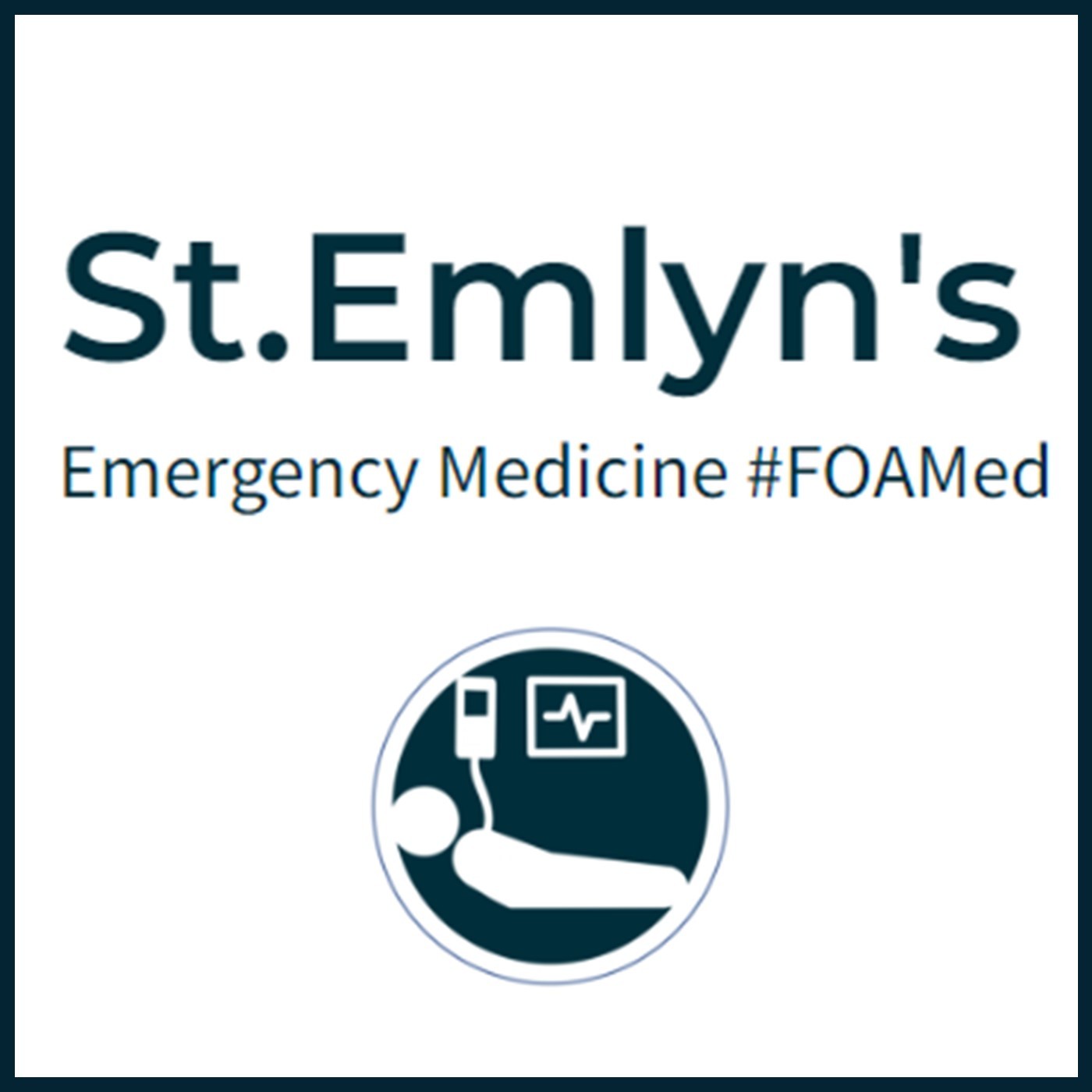
1.3M
Downloads
273
Episodes
A UK based Emergency Medicine podcast for anyone who works in emergency care. The St Emlyn ’s team are all passionate educators and clinicians who strive to bring you the best evidence based education. Our four pillars of learning are evidence-based medicine, clinical excellence, personal development and the philosophical overview of emergency care. We have a strong academic faculty and reputation for high quality education presented through multimedia platforms and articles. St Emlyn’s is a name given to a fictionalised emergency care system. This online clinical space is designed to allow clinical care to be discussed without compromising the safety or confidentiality of patients or clinicians.
Episodes
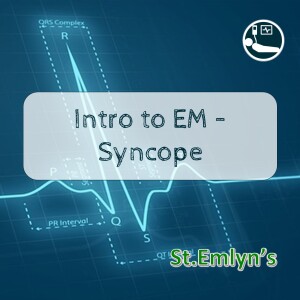
Friday Aug 22, 2014
Friday Aug 22, 2014
Understanding Syncope: A Comprehensive Guide for Emergency Medicine
Introduction
Today, we are discussing syncope, a common yet complex condition involving a transient loss of consciousness due to a temporary reduction in blood flow to the brain. This comprehensive guide aims to provide insights into diagnosing and managing syncope in the emergency department.
The Challenge of Syncope Diagnosis
When patients present with collapse, it’s essential to differentiate between mechanical falls and syncope due to physiological reasons. The key to diagnosis lies in understanding whether the event was caused by a transient loss of consciousness or a mechanical fall. This distinction guides the diagnostic pathway and ensures the appropriate management of potential life-threatening conditions.
Physiology of Syncope
Syncope results from a temporary reduction in cerebral perfusion pressure, which can occur due to various physiological disruptions. Understanding the factors affecting cerebral perfusion, such as mean arterial pressure, cardiac output, and peripheral resistance, is crucial. Any significant deviation in these parameters can lead to syncope.
Cardiac Causes of Syncope
Rhythm Issues
Cardiac syncope often involves rhythm disturbances like bradycardia (abnormally slow heart rate) or tachycardia (abnormally fast heart rate). Bradycardia can reduce cardiac output, while tachycardia can decrease stroke volume. Identifying these rhythm issues is vital as they can be life-threatening.
Structural Issues
Structural heart diseases, such as aortic stenosis or hypertrophic cardiomyopathy, restrict blood flow, leading to syncope. Pulmonary embolism, although less common, can also cause syncope by obstructing pulmonary circulation.
Importance of ECG in Diagnosis
The electrocardiogram (ECG) is a critical tool for diagnosing cardiac causes of syncope. It helps identify arrhythmias, conduction abnormalities, and other cardiac issues. Continuous ECG monitoring, or Holter monitoring, can capture transient arrhythmias not seen on a standard ECG.
Neurological Causes of Syncope
Neurological conditions, such as seizures and transient ischemic attacks (TIAs), can present as syncope. Differentiating between these and true syncope is essential. Seizures often have specific signs like tongue biting, loss of bladder control, and post-ictal confusion. TIAs can cause temporary disruptions in blood flow to the brain, leading to syncope-like episodes.
Physiological Causes of Syncope
Vasovagal Syncope
Vasovagal syncope, triggered by stress, pain, or prolonged standing, involves a sudden drop in heart rate and blood pressure. It is a common and generally benign cause of syncope.
Orthostatic Hypotension
Orthostatic hypotension, a drop in blood pressure upon standing, can result from dehydration, medications, or autonomic dysfunction. It is a frequent cause of syncope, especially in elderly patients.
Diagnostic Approach
Patient History
A thorough patient history is crucial for identifying the cause of syncope. Key elements include the circumstances of the episode, prodromal symptoms, witness accounts, and medical history. This information helps distinguish between different causes of syncope.
Physical Examination
A comprehensive physical examination includes checking vital signs, cardiovascular examination, and neurological assessment. Identifying abnormalities during the physical exam can provide clues to the underlying cause of syncope.
Diagnostic Tests
- ECG: Identifies arrhythmias and conduction abnormalities.
- Holter Monitoring: Captures transient arrhythmias.
- Echocardiogram: Assesses structural heart diseases.
- Tilt-Table Test: Diagnoses vasovagal syncope or orthostatic hypotension.
- Blood Tests: Evaluate electrolyte levels, blood glucose, and cardiac biomarkers.
Management Strategies
Cardiac Syncope
Management of cardiac syncope focuses on stabilizing heart rhythm and function. Treatments may include pacemaker implantation for bradycardia, medications for tachycardia, and surgical interventions for structural heart diseases. Arrhythmias may require implantable cardioverter-defibrillators (ICDs).
Neurological Syncope
Managing neurological causes involves addressing the underlying condition. Antiepileptic medications control seizures, while immediate interventions restore blood flow in strokes or control bleeding. TIAs require medications and lifestyle changes to reduce recurrence risk.
Physiological Syncope
- Vasovagal Syncope: Management includes avoiding triggers, increasing fluid and salt intake, and using compression stockings. Severe cases may require medications.
- Orthostatic Hypotension: Gradual position changes, increased hydration, and reviewing medications. Medications like fludrocortisone may be necessary.
- Dehydration: Rehydration with oral or intravenous fluids.
- Medication Review: Adjusting or discontinuing medications contributing to syncope.
Safety Netting and Follow-Up
Safety netting ensures patients receive appropriate follow-up care and instructions. Key elements include providing clear discharge instructions, scheduling follow-up appointments, and educating patients about syncope causes and management.
Special Considerations
Reflex Anoxic Seizures
Reflex anoxic seizures, seen especially in children, involve shaking movements due to a drop in oxygenation. These can be misinterpreted as epileptic seizures but require different management.
Misdiagnosis Risks
Misdiagnosis of syncope as epilepsy or vice versa is common. Always consider both possibilities, especially when symptoms overlap.
Postural Hypotension and Specific Diagnoses
Postural hypotension requires careful evaluation. Special considerations include ruling out abdominal aortic aneurysm in older men and ectopic pregnancy in younger women.
Conclusion
Syncope is a multifaceted condition that demands careful evaluation and management in the emergency department. By understanding the underlying causes, utilizing appropriate diagnostic tools, and implementing effective management strategies, healthcare professionals can optimize patient outcomes and reduce the risk of recurrent episodes.
This guide aims to provide valuable insights into the diagnosis and management of syncope, helping healthcare providers deliver high-quality care. For further information, examples, and case studies, visit the St Emlyn's blog, where we continue to share knowledge and expertise in emergency medicine.
Remember, accurate diagnosis and timely intervention are key to managing syncope effectively. Stay vigilant, consult with senior colleagues when needed, and always prioritize patient safety.
Thank you for reading. If you have any questions or need further information, please get in touch. We look forward to continuing the conversation and improving patient care together.
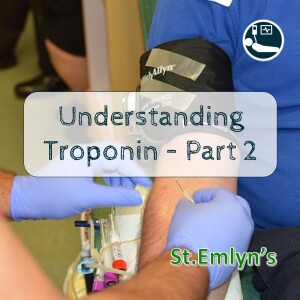
Thursday Aug 07, 2014
Ep 15 - Understanding Troponin - Part 2
Thursday Aug 07, 2014
Thursday Aug 07, 2014
Understanding High Sensitivity Troponins: A Guide for Emergency Physicians
Welcome to the St. Emlyn's podcast. I'm Ian Beardsell and I'm Rick Bodden. This is part two of our troponin special where we delve deeper into high sensitivity troponins (hs-Tn) and their significance in emergency medicine. Today, we'll explore the nuances of hs-Tn assays and how they can enhance our work in the emergency department (ED).
Introduction to High Sensitivity Troponins
High sensitivity troponins (hs-Tn) have transformed how we detect and manage myocardial infarctions (MI) in emergency settings. Unlike traditional assays, hs-Tn tests detect much lower concentrations of troponin, a protein released during myocardial injury, allowing for earlier and more accurate detection of cardiac events.
Analytical Sensitivity vs. Diagnostic Sensitivity
Understanding the difference between analytical and diagnostic sensitivity is crucial. Analytical sensitivity refers to the assay's ability to detect low concentrations of troponin, whereas diagnostic sensitivity relates to the test's performance in diagnosing acute myocardial infarctions (AMI).
Key Points on Analytical Sensitivity:
- Detection Threshold: High sensitivity troponin assays can detect troponin in over 50% of healthy individuals.
- Precision: These assays have a coefficient of variation (CV) of less than 10% at the diagnostic threshold, ensuring consistent results.
Diagnostic Sensitivity:
- Improved Detection: Studies show hs-Tn assays have a higher diagnostic sensitivity (90-92%) compared to older assays (80-85%).
- Early Rule-Outs: This makes hs-Tn particularly valuable for ruling out AMI in patients presenting with chest pain in the ED.
High Sensitivity Troponin Assays: A Closer Look
To illustrate, let's focus on the Roche troponin T high sensitivity assay:
- 99th Percentile Cutoff: 14 nanograms per liter.
- Detection Range: Can detect levels as low as 3 nanograms per liter.
- Higher Readings: It's common for hs-Tn assays to give higher readings than older assays for the same sample, which affects the diagnostic threshold.
The Balance Between Sensitivity and Specificity
While hs-Tn assays improve sensitivity, they may reduce specificity:
- More Positives: Lowering the diagnostic threshold results in more positive results, increasing diagnostic sensitivity but reducing specificity.
- Predictive Value: For example, a positive hs-Tn T result at patient arrival has a specificity around 70% and a positive predictive value of 50%.
Using High Sensitivity Troponins in the Emergency Department
Early Rule-Out Protocols: The most significant advantage of hs-Tn assays is their potential to expedite the rule-out process:
- Zero and Three-Hour Protocols: Studies suggest that hs-Tn assays can effectively rule out AMI with samples taken at 0 and 3 hours after arrival, instead of the traditional 6-hour wait.
- Efficiency: This protocol can significantly speed up patient throughput in the ED, reducing congestion and wait times.
Understanding Deltas: Delta refers to the change in troponin levels between tests:
- Absolute vs. Relative Deltas: Absolute changes (e.g., an increase of 10 nanograms per liter) are often more reliable than relative percentage changes.
- Clinical Context: It's crucial to interpret deltas in the context of the patient's overall clinical picture.
Practical Considerations for Emergency Physicians
Incidental Troponin Elevations: With increased testing at the front door, incidental findings are inevitable:
- Low Pre-Test Probability: In patients with a low pre-test probability of AMI (e.g., mechanical falls), a positive hs-Tn result often does not indicate AMI.
- Clinical Judgment: Consider repeating the test and evaluating the patient's history and clinical presentation before making a decision.
Patients with Comorbidities: Troponin levels can be elevated in patients with various comorbidities:
- Age and Chronic Conditions: Older patients and those with conditions like LV dysfunction may have higher baseline troponin levels.
- Reference Ranges: Use broader reference ranges for patients with comorbidities, as suggested by studies from Paul Collins and colleagues.
Future Directions and Guidelines
Ongoing Research: Research and guidelines on hs-Tn usage are continually evolving:
- NICE Guidelines: Recommendations on using hs-Tn in clinical practice are expected to be published, providing clearer protocols for emergency physicians.
- Early Adoption: As new evidence emerges, early adopters must balance innovation with patient safety.
Point-of-Care Testing: While hs-Tn assays currently require large analyzers, point-of-care testing remains a goal:
- Future Developments: Advances in technology may eventually make hs-Tn testing available at the bedside, further streamlining ED workflows.
Conclusion
High sensitivity troponins represent a significant advancement in the early detection and management of myocardial infarctions in the emergency department. By understanding the nuances of analytical and diagnostic sensitivity, utilizing early rule-out protocols, and interpreting results within the clinical context, emergency physicians can leverage these assays to improve patient care. As always, ongoing research and adherence to evolving guidelines will be essential in optimizing the use of hs-Tn in clinical practice.
We hope this podcast helps you better understand the complexities and advantages of high sensitivity troponins. For more insights and updates, stay tuned to the St. Emlyn's blog and feel free to reach out with your questions and experiences. Together, we can continue to advance emergency medicine for the benefit of our patients.
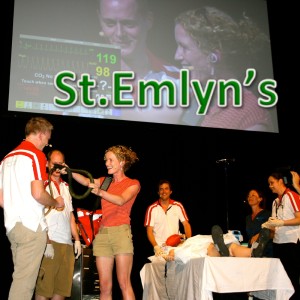
Wednesday Aug 06, 2014
Ep 14 - Exeter CEM conference with Adam Reuben
Wednesday Aug 06, 2014
Wednesday Aug 06, 2014
College of Emergency Medicine Conference 2024: Everything You Need to Know
Welcome to the St. Emlyne's blog, where we provide the latest updates and insights into the world of emergency medicine. Today, we're diving into the much-anticipated College of Emergency Medicine (CEM) Conference, set to take place in Exeter from September 9th to 11th. This conference is not only a hub for academic learning but also a celebration of the progress and future of emergency medicine.
Why Exeter?
Exeter, nestled in the scenic Southwest of England, offers an exciting venue for this year’s CEM Conference. The University of Exeter provides a fresh and dynamic backdrop, allowing attendees to experience a new environment. The choice of Exeter also aims to highlight the region's significant contributions to medical research and practice. Plus, the location promises better weather compared to other parts of the UK, making it a pleasant destination.
Key Highlights and Speakers
The conference is packed with sessions designed to engage and educate emergency medicine professionals. Here are some highlights to look forward to:
Inspirational Talks and Keynote Speakers
- Ann Marie Kelly from Australia will share her expertise on arterial and venous blood gases, offering critical insights for daily medical practice.
- James Robson, doctor to the Scottish rugby team and the British and Irish Lions, will discuss the pressures and challenges of pitchside medicine and his experiences over the past 15 to 20 years.
- Cliff Reed, a renowned figure in emergency medicine, will inspire attendees with his motivational presentations.
- Cliff Mann, the current college president, will discuss clinical topics, reflecting his deep involvement in frontline emergency medicine.
Engaging Sessions
The conference features a variety of sessions tailored to different interests within emergency medicine:
- Dragon's Den: Watch as grant applicants pitch their projects to a panel of emergency medicine experts, competing for a share of £1000 to fund their innovative ideas.
- Stroke Management: Jason Kendall will provide an in-depth look at stroke management and the latest research in this critical area.
Social and Networking Events
Balancing work with social activities is a key theme of the conference. Highlights include:
- Gala Dinner at Exeter Castle: An opportunity to unwind and network in a historic setting.
- Explore Devon Activities: From surfing at Bantham to paddleboarding on the River Exe, there are plenty of outdoor activities. Attendees can also enjoy kayaking, mountain biking, or exploring local museums.
Academic Excellence
The conference boasts a robust academic programme with four tracks running simultaneously on some days, ensuring there's something for everyone, whether you're a trainee, an established consultant, or involved in cutting-edge emergency medicine research.
Core Emergency Medicine Topics
Sessions focus on essential topics in emergency medicine, aiming to reconnect professionals with the fundamentals that make this field vital and rewarding. The goal is to address rising attendances and increasing pressures in emergency departments by reinforcing core knowledge and practices.
Cutting-Edge Research
Attendees will engage with the latest research and innovations in emergency medicine. The programme is designed to be both educational and academically stimulating, attracting participants with its high-quality content.
Why Attend?
The CEM Conference in Exeter offers numerous benefits:
- Professional Development: Enhance your knowledge and skills through sessions led by top experts in the field.
- Networking: Connect with colleagues from across the country and beyond, sharing experiences and best practices.
- Inspiration: Gain new perspectives and motivation from leading figures in emergency medicine.
- Fun and Relaxation: Enjoy the social events and explore the beautiful surroundings of Exeter and Devon.
Practical Information
Booking and Availability
If you haven't booked your place yet, it’s not too late! There are still a few spots available, but they are filling up fast. Visit the college website to secure your place and register for the explore Devon activities, which are also in high demand.
Staying Updated
For those who can’t attend in person, the conference will share video excerpts of key sessions. Follow the #CEMEXETER2014 hashtag on Twitter and check out the college's YouTube channel for updates and highlights.
Conclusion
The CEM Conference in Exeter is shaping up to be an unmissable event for anyone in the field of emergency medicine. With its combination of high-quality academic content, inspirational speakers, and engaging social activities, it promises to be both educational and enjoyable. Whether you're attending for the learning opportunities, the chance to network, or simply to enjoy the vibrant atmosphere, this conference has something to offer everyone.
Don't miss out on this fantastic opportunity to advance your career and connect with the emergency medicine community. Book your place today and join us in Exeter for an unforgettable experience!

Sunday Aug 03, 2014
Ep 13 - Intro to EM: Shortness of breath
Sunday Aug 03, 2014
Sunday Aug 03, 2014
Shortness of breath, or dyspnoea, is an alarming symptom because it can signify a wide range of serious conditions. From acute respiratory diseases to cardiac emergencies, the differential diagnosis is vast. For new doctors, encountering a patient with dyspnea can be particularly challenging due to the multitude of potential causes and the urgent nature of the symptom.
Prioritising Life-Threatening Conditions
In the ED, our primary focus is to rule out the most serious conditions first. This approach ensures that we address potentially fatal diagnoses promptly. The key life-threatening causes of shortness of breath include:
- Asthma and COPD Exacerbations
- Pneumonia
- Left Ventricular Failure (LVF)
- Pulmonary Embolism (PE)
- Pneumothorax
These conditions require immediate attention and demand different management strategies. Let's break down each one and discuss the clinical approach.
Initial Stabilisation: Oxygen Therapy
When a patient presents with shortness of breath, one of the first steps is to administer oxygen. This intervention is typically beneficial, as it addresses potential hypoxia, a common denominator in many serious conditions. While long-term oxygen therapy may have contraindications in specific situations, such as COPD exacerbations, the immediate goal is to stabilize the patient.
Resuscitation and Monitoring
For patients with severe dyspnea, resuscitation measures might be necessary. These individuals should be placed in a monitored area with nursing support and close physician oversight. In cases where respiratory distress is evident, ensure that resuscitation equipment and personnel are readily available.
Taking a Detailed History and Performing a Physical Examination
History Taking
A thorough history is critical in identifying the underlying cause of shortness of breath. Key aspects to explore include:
- Past Medical History: Conditions such as asthma, COPD, heart failure, or previous PE episodes are crucial.
- Symptom Onset and Progression: Sudden onset may suggest PE or pneumothorax, while a more gradual progression could indicate chronic diseases.
- Associated Symptoms: Fever might point towards an infectious process like pneumonia, while chest pain could suggest PE or myocardial infarction.
It's also helpful to ask the patient if they have experienced similar symptoms before. This question can provide immediate insight, especially if the patient has a known condition like LVF.
Physical Examination
The physical examination should be comprehensive, focusing on:
- Respiratory Rate: Tachypnea is a red flag and often correlates with the severity of the underlying condition.
- Heart and Lung Sounds: Wheezing, crackles, or diminished breath sounds can help differentiate between asthma, COPD, pneumonia, and heart failure.
- Peripheral Signs: Look for indications of DVT, cyanosis, or edema, which can suggest cardiac or thromboembolic etiologies.
Diagnostic Testing and Imaging
Initial Tests
- Electrocardiogram (ECG): Essential for detecting cardiac causes such as ischemia or arrhythmias.
- Chest X-Ray: A quick and non-invasive tool to identify pneumonia, pneumothorax, heart failure, or pleural effusions.
- Arterial Blood Gas (ABG): Useful for assessing oxygenation and ventilation status, particularly in acute cases. Using local anesthetic can alleviate the discomfort associated with ABG sampling.
Advanced Imaging
- CT Pulmonary Angiography (CTPA): The gold standard for diagnosing PE, particularly when clinical suspicion is high.
- Point-of-Care Ultrasound (POCUS): Increasingly used to evaluate lung pathology, assess for pleural effusions, and gauge cardiac function.
Tailoring Treatment to Specific Diagnoses
Asthma and COPD Exacerbations
- Bronchodilators: Administer via nebulizers or metered-dose inhalers with spacers.
- Corticosteroids: Often necessary to reduce airway inflammation.
Pneumonia
- Antibiotics: Initiate early, especially in septic patients, to combat bacterial infections.
- Supportive Care: Including fluids for hydration and fever management.
Left Ventricular Failure
- Diuretics: Administer to reduce fluid overload and alleviate pulmonary congestion.
- Vasodilators: Consider in cases of severe hypertension or acute pulmonary edema.
Pulmonary Embolism
- Anticoagulation: Essential for preventing further clot formation.
- Thrombolysis: Consider in cases of massive PE with hemodynamic instability.
Pneumothorax
- Needle Decompression: Required for tension pneumothorax, followed by chest tube insertion.
- Observation or Chest Tube: Depending on the size and symptoms of a simple pneumothorax.
Monitoring and Reassessment
Continuous monitoring is vital for patients presenting with shortness of breath. Vital signs, including oxygen saturation and respiratory rate, should be closely observed. Frequent reassessment allows for timely adjustments in the treatment plan, ensuring optimal patient outcomes.
The Importance of Senior Support and Collaborative Care
In the ED, working alongside senior colleagues and consulting other specialties can significantly enhance patient care. Junior doctors should proactively seek guidance, especially in complex or uncertain cases. This collaborative approach not only enhances patient safety but also serves as a valuable educational experience.
Developing a Systematic Approach
Dealing with shortness of breath can be stressful, especially when the cause is not immediately apparent. Developing a systematic approach, or mental model, can help clinicians efficiently manage these cases. Practicing this approach mentally, perhaps during a commute, can prepare one for real-life scenarios. This mental rehearsal fosters a more confident and effective response when faced with an actual patient.
Conclusion
Shortness of breath is a common yet potentially life-threatening symptom that demands a structured and thorough approach. By prioritizing the exclusion of critical diagnoses, employing appropriate diagnostic tools, and initiating targeted treatments, emergency physicians can significantly improve patient outcomes. Remember, early intervention and continuous monitoring are key, as is the willingness to consult senior colleagues and use available resources.
For more detailed discussions and educational resources, visit our blog site. Keep learning, stay curious, and continue to provide compassionate care to all patients. Thank you for joining us on the St. Emlyn's podcast. We look forward to sharing more insights and discussions in future episodes. Good luck in your practice, and always strive to heal the sick! See you soon!
Summary
Shortness of breath is a common yet potentially life-threatening presentation in the emergency department. A structured approach to assessment and management, including a thorough primary survey, focused history, physical examination, and targeted investigations, is essential. Early initiation of oxygen therapy, appropriate use of diagnostic tools, and timely management of underlying conditions can significantly impact patient outcomes. Collaboration with senior colleagues and continuous education through simulation and practice are key to improving care for these patients.
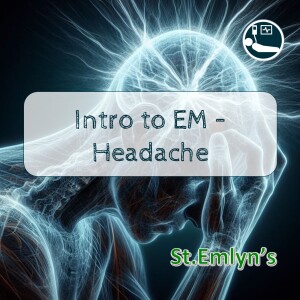
Friday Aug 01, 2014
Ep 12 - Intro to EM: Headache
Friday Aug 01, 2014
Friday Aug 01, 2014
The Importance of Thorough Evaluation
Headaches can be tricky. Many patients experience them as part of various symptomatologies, but our focus here is on those for whom headache is the primary complaint. Our objective is to rule out serious conditions while providing effective management. The major diagnoses to consider include subarachnoid haemorrhage, meningitis, brain tumours, and temporal arteritis.
Subarachnoid Hemorrhage: A Critical Diagnosis
Every emergency physician must be vigilant about subarachnoid haemorrhage (SAH). The classic presentation is a sudden-onset severe headache, often described as being hit on the back of the head with a baseball bat. However, not all patients present with this textbook description. Many just report an incredibly severe headache, sometimes developing over minutes rather than instantaneously.
In such cases, the threshold for investigation should be low. Studies indicate that about 10% of patients presenting to the ED with headaches have a potentially life-threatening condition such as SAH, tumor, or meningitis. This high hit rate underscores the importance of being thorough. Early CT scans are critical. They are more diagnostic the earlier they are performed, and a negative CT can often effectively rule out SAH.
Meningitis: A Subtle but Deadly Threat
Meningitis is another serious condition that can cause a headache. The classic signs include a recent infection, high temperature, neck stiffness, and altered consciousness. However, like SAH, meningitis doesn’t always follow the textbook. Patients may present with milder symptoms, such as neck pain without severe rigidity or general discomfort with light without pronounced photophobia.
Blood tests like white cell count and CRP are not always reliable when considering meningitis. The absence of abnormalities doesn’t rule out the disease. Therefore, empirical treatment with antibiotics is often warranted if there’s any suspicion of meningitis. It’s better to administer antibiotics and later find out they weren’t necessary than to miss a diagnosis and face dire consequences.
Brain Tumors: The Silent Intruders
Brain tumours can present subtly, often with non-specific signs like headaches, which can be easily overlooked. First-time seizures in young adults are a common presentation that warrants a thorough evaluation for tumours. CT scans are typically sufficient to detect most tumours, although in some cases, additional imaging such as MRI or CT angiography may be necessary.
Temporal Arteritis: A Vision-Saving Diagnosis
Temporal arteritis is another condition to consider, particularly in patients over 50. Symptoms include headache, jaw claudication, and visual disturbances. Blood tests such as ESR and CRP are useful here. Early treatment with steroids can prevent irreversible vision loss, making prompt diagnosis and intervention crucial.
Managing Migraines in the ED
Migraines are a common yet often overlooked cause of severe headaches that bring patients to the ED. While not life-threatening, they can be debilitating. Effective management involves hydration, analgesics, anti-emetics, and sometimes 5HT3 receptor antagonists. It’s important to distinguish between first-time migraine presentations and recurrent migraines, especially in older patients, to rule out more serious underlying conditions.
The Role of CT Scans in Headache Management
The advent of CT scanning has revolutionized the management of headaches in the ED. Today, the threshold for performing a CT scan is much lower than it was 15 years ago. Despite concerns about radiation, the benefit of identifying serious conditions outweighs the risks, particularly when about 10% of patients have significant pathology.
Practical Tips for Junior Doctors
For junior doctors, it’s essential to involve senior colleagues in the evaluation and management of patients presenting with headaches. Discussing cases with experienced physicians helps in understanding the rationale behind investigations and management decisions. This collaborative approach ensures comprehensive care and aids in professional development.
Conclusion
Managing headaches in the emergency department requires a careful, systematic approach to rule out life-threatening conditions while providing effective symptom relief. Subarachnoid haemorrhage, meningitis, brain tumours, and temporal arteritis are critical diagnoses that must not be missed. Early CT scans, judicious use of blood tests, and prompt empirical treatment when necessary are key strategies. Remember, thorough evaluation and timely intervention can significantly improve patient outcomes.
